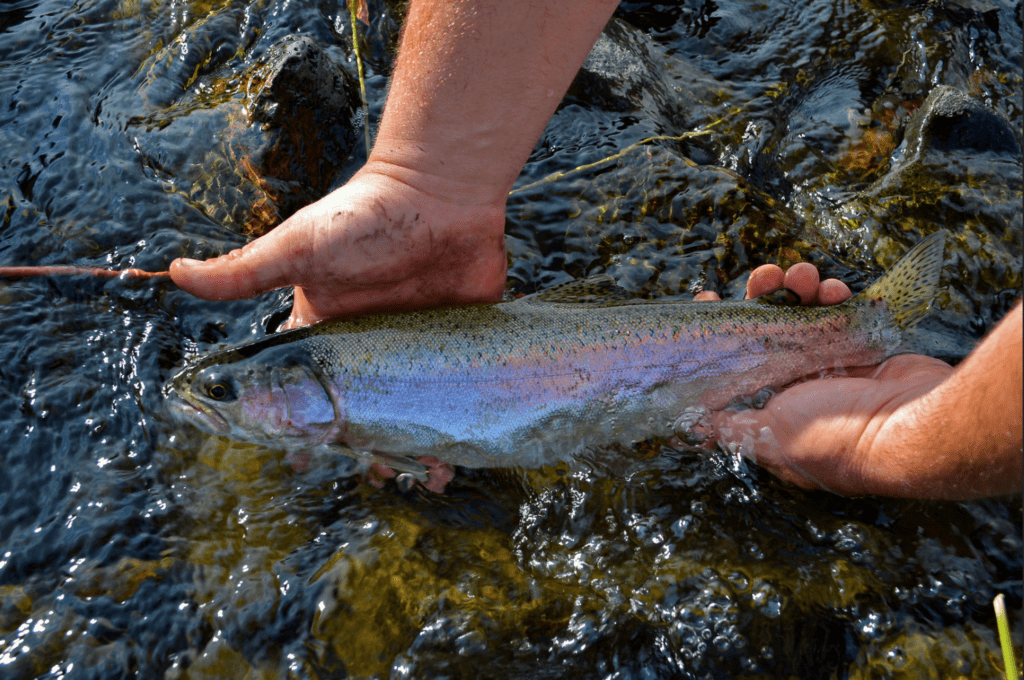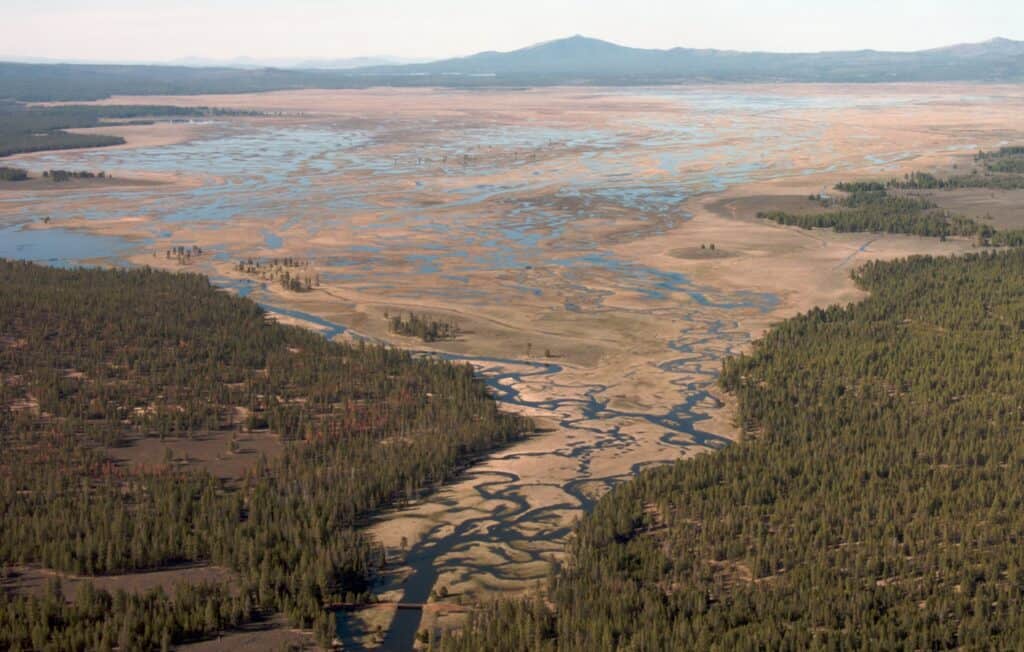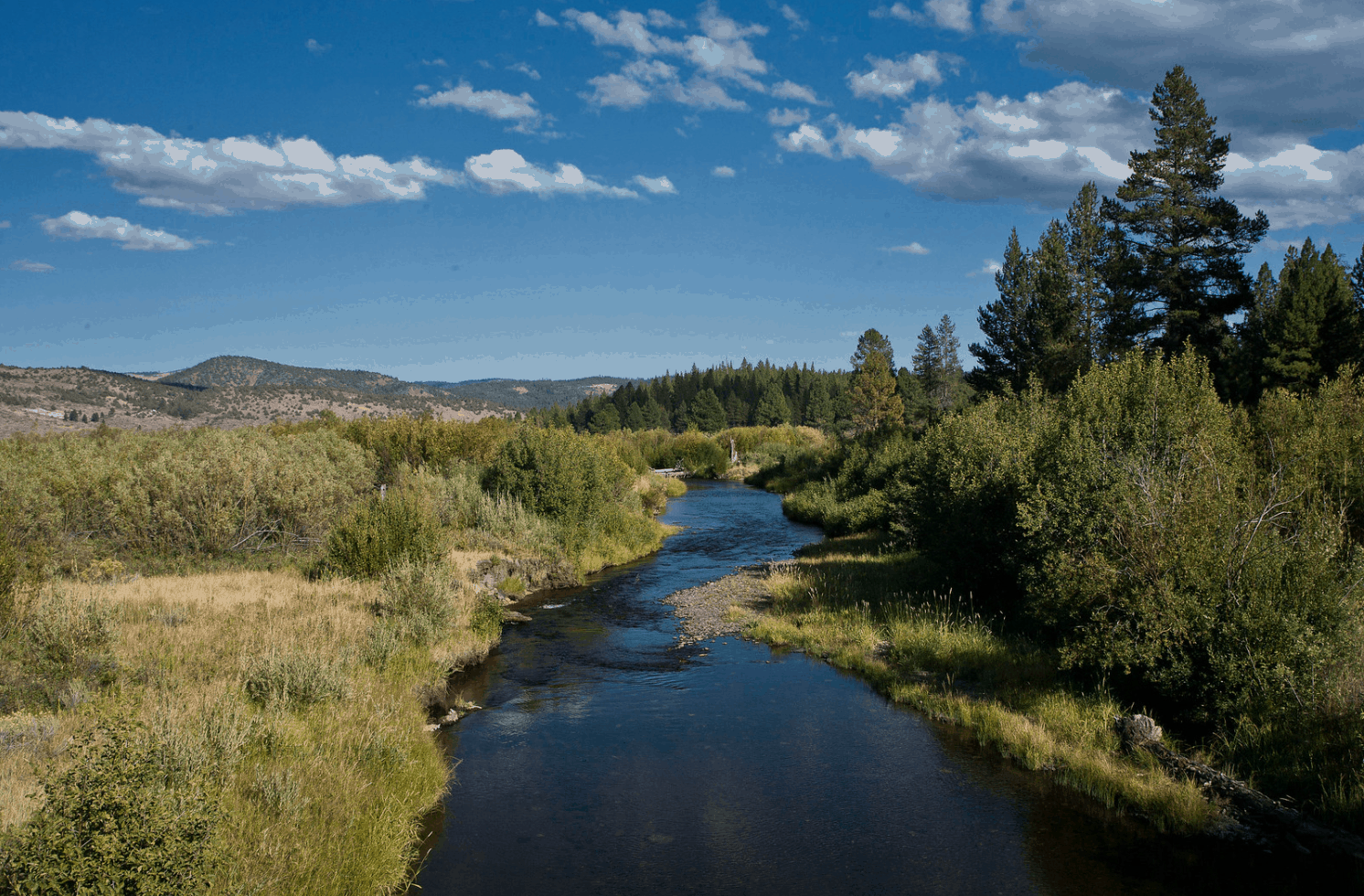The Sprague and Sycan Rivers are two of the most frequently overlooked rivers in the entire Klamath Basin.
With options like the Williamson River and Upper Klamath Lake around, many fishermen don’t even consider the Sprague and Sycan.
The fact that these two rivers are relatively unknown, in addition to the fast and furious fishing that they can provide, makes them a great choice for fishermen who want to escape into solitude.
The Sycan is a tributary of the Sprague, and both of these rivers are classic Oregon high desert rivers: small, highly unpredictable, and very fun to fish.
If you’re interested in checking out some new, relatively unfished water, the Sprague and Sycan are a great choice.
Both streams offer some opportunities to harvest trout, but check out the regulations before keeping any.
When to Fish
Though the Sprague and Sycan rivers are part of the same system, the fishing seasons on them are different. The Sycan, the smaller of the two, is open all year.
The Sprague, on the other hand, is generally open from late April to October – as always, regulations are subject to change, so make sure to check the latest before you go.
As high desert streams, both of these rivers are highly subject to rainfall and snowmelt, meaning that the fishing on them can be very unpredictable.
Additionally, high temperatures during the dog days of summer can significantly slow down fishing on these rivers, and they’re best fished during the shoulder seasons – spring and fall.
Current flows and recent reports are always good to keep an eye on.
Both of these rivers begin to fish well beginning in April and May, but high flows and snowmelt can mean that some weeks are fishable and other weeks are very unproductive.
Fishing is good well into June and usually through mid-July, after which the quality of fishing can drop off due to low river levels and high water temperatures.
Keep an eye on the weather, though; prolonged cool or wet spells during the summer can re-activate the fishing.
The fall is another great time to fish the Sprague and Sycan. September through October on the Sprague and into November on the Sycan are ideal, as not much snow has fallen at this point and the fish are feeding in preparation for winter.
If you do try to venture out to fish the Sycan in the winter, keep in mind that fishing will likely be very slow and the area may be inaccessible due to snow.
Trout Fishing

Fly fishing is far and away the most popular and productive approach on these rivers, but conventional fishermen still find success.
Productive approaches to trout fishing on both the Sprague and Sycan are generally the same – as with most high desert streams, the fish are not very picky and will take a wide variety of patterns presented to them.
If you’re fly fishing, make sure to bring along stimulators, midges, and a wide variety of terrestrial patterns.
The fish in these rivers are eager to rise to dries, and it’s a blast to fish them.
And virtually any nymph pattern works here – think general patterns like pheasant tails and hare’s ears.
Conventional fishermen find success with spinners and other lures.
If you are fishing spinners, make sure to keep the lures on the smaller side, as the fish in these rivers usually run fairly small.
Between the two rivers, the Sycan beats the Sprague in terms of popularity and productivity for fly fishermen.
The difference is in part because in addition to providing superior access, the Sycan is more trout-oriented water. In fact, parts of the Sprague are sluggish and are even home to bass, perch, and other warmwater species.
The Sprague, however, is home to larger trout than the Sycan.
In its lower stretches, rainbow trout up to 2 and 3 pounds are available, and the occasional brown trout exceeding 5 pounds is caught. Other than these large fish, most trout average between 8 to 12 inches on the Sprague.
On the upper section of the Sprague, where it splits into north and south forks, trout run even smaller, generally between 4 and 10 inches.
There is a restrictive bag limit on Sprague River rainbows.
Fish on the Sycan also run small, generally between 8 and 12 inches. However, some anglers do report trout larger than 18 inches in the Sycan, so there is always a chance of a big fish.
Location and Access
Unlike the nearby Williamson River, the Sprague and Sycan offer plenty of bank access.
Sprague River Road parallels the lower Sprague for long stretches, and there are a number of parks that offer public access as well.
The Sycan can be divided into two stretches: the stretch above the marsh and the stretch below it.
Above the marsh, plentiful rainbow and brook trout are found in pocket water and shallow riffles. This stretch has expansive access and is the most commonly-fished stretch of the river.

Below the marsh, anglers will find larger brown trout and rainbow trout. Access is harder here, but the best spots can be found from Torrant Creek down to the mouth of the river.
The Sprague and Sycan rivers are both excellent options for anglers who are looking for peaceful, productive fishing in the Klamath Basin.
While these rivers may not warrant a four or five-hour trip from Portland or Eugene, if you live near the rivers or happen to be in the area, they’re certainly worth a shot.
Find more fishing spots in Klamath County
Oregon Resources
ODFW Weekly Fishing Report
ODFW Trout Stocking Schedule
Oregon Fishing Regulations
National Weather Service
Carter Reschke is a freelance writer based in Oregon. Passionate about the outdoors, Carter is a fly fishing aficionado and spends his days on the river when he’s not writing.

